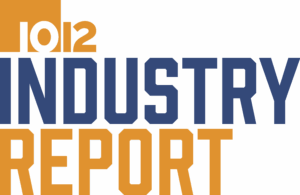
This article is part four in a series. If you want to check out the previous installments, you can find them here: Part 1 | Part 2 | Part 3
To summarize, here are the three big concepts from the previous articles:
 1. If your process doesn’t address fixing the breakdowns in an organization that make it hard for workers to choose the right behaviors, then you do not have a true Human Performance or BBS process.
1. If your process doesn’t address fixing the breakdowns in an organization that make it hard for workers to choose the right behaviors, then you do not have a true Human Performance or BBS process.
2. Don’t get hung up on the titles Human Performance or Behavior-Based Safety, as they are not good descriptors. The names sound like “people” fixes, letting the organization off the hook.
3. BBS wants the worker to self-correct, while Human Performance wants to strike a balance between improved worker behaviors and organizational accountability.
Now the big question: If both are intended to improve worker behaviors, does this shift in focus make a difference? Spoiler alert: Yes. The reason why: Behavior is a symptom of culture.
How a worker behaves is influenced by the culture of an organization. Think about how the New Orleans Saints’ outcomes improved when the culture started being shaped by Sean Payton and Drew Brees. For decades the Saints focused (through a paper bag at times) on the behaviors of interceptions, missed tackles and dropped balls like a BBS system: “We defined the behavior. That’s not the behavior we want; here is some coaching, now do better or we’ll replace you.” Occasionally, they would get a talented player or coach and would win a few games, but they weren’t an enviable team through the ’70s, ’80, and ’90s because the culture wasn’t there for it.
Look at the New England Patriots. The culture is so strong that they can take a seemingly washed up player, like Randy Moss, and turn him into an NFL Pro-Bowler. In his last year with the Raiders, his stats were 42 receptions, 553 yards, and 3 touchdowns. The next year with the Patriots? 98 receptions, 1493 yards and 23 touchdowns (the current single-season record). The same worker, doing the same job, but with amazing results because the culture supported it, and the Patriots have been doing this for almost 20 years with many different players/workers.
The worker isn’t broken and needs to be fixed. There isn’t some untapped reserve of “safety” or “situational awareness” that the worker can magically summon if only they were reminded. The worker is an underutilized asset that can reach his or her full potential if the culture supports it. Human Performance strives to shape the entire culture. The focus must be on the organization and how it can help the worker; not how to fix the worker’s behavior. Again, the behavior is a symptom of the culture. You can treat the symptom to get temporary improvement, but treating the disease (a culture that allows the wrong behaviors) will get you lasting results.
Human Performance and BBS both want to improve worker behaviors. BBS wants to fix the worker as if the worker just needed to try a little harder. Human Performance wants to improve the health of the culture to maximize the effort the worker is already providing.
The success of BBS will rise and fall with the talent of the workers and their ability to excel in less-than-ideal conditions. Human Performance will get the most out its people, irrespective of the specific worker, by focusing on surrounding them with a culture that does its share. This is the big difference between BBS and Human Performance. You can get some better players with BBS, but you can get the most out of ALL your players with a Human Performance culture doing its part. Who knows how many Pro Bowl players you have right now who are ready to perform if given the right culture?
Toolbox Talks offers quick insights and thoughts to use for your toolbox (tailboard) talks. Dave Sowers is a founding member of Knowledge Vine, a veteran-owned human performance training and consulting organization that strives to reduce the frequency and severity of human errors in the workplace. He has almost 30 years of experience in power generation and the utility industry. He is a veteran of U.S. Navy Nuclear Power Program and holds a bachelor’s degree in resources management and a master’s degree in both management and emergency management and homeland security.


